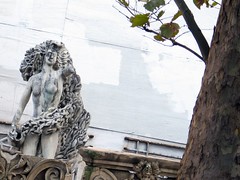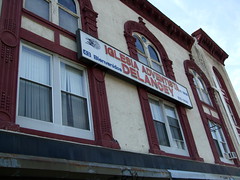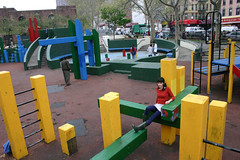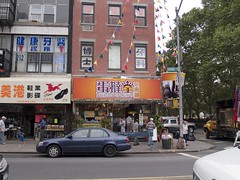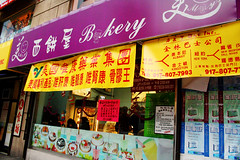West:
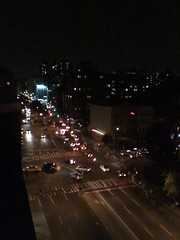
Sara D. Roosevelt Park
Named for
FDR's mother, a formidable woman who took
credit for her son's political success, and who was
something of a terror to her daughter-in-law
Eleanor. The park is the result of massive slum
clearance in 1929; it was supposed to be replaced
with public housing, but corrupt city land deals--some
involving the soon-to-be-vanished Judge Joseph Crater--
made the price prohibitive.

Second African Burial Ground
The playground between Stanton and Rivington streets
is on the site of where African-Americans were interred after the closing
of the more famous downtown cemetery in 1794. At
the time, this was unwanted part of the ruined Delancey
estate. In 1853, as the city grew uptown, this burial
ground was closed, and the bodies (supposedly)
relocated to a churchyard uptown.
The cemetery is commemorated by the M'Finda Kalunga
Community Garden, in this park between Rivington and
Delancey, whose name means "Garden at the Edge of the
Other Side of the World" in the Kicongo language.
|
|
|
East:
Corner (135 E Houston): Gem Soho, the upscale brand of the Clarion hotel chain; was fairly recently a Howard Johnson Express, an affordable if generic place to sleep on the Lower East Side.
210:
myplasticheart, designer toy store and
gallery opened 2004.
Alternative Education Complex
198 (corner): Includes the Jeffrey C. Tenzer Learning Center, Auxiliary Services for High Schools, Cascades High School and the Lyle Center Satellite Academy.
|
|
188 (corner): This four-story building was part of
the development project that the Garden of Eden was bulldozed
to make room for in 1986.
184: The tenement previously at this address
was the home of Adam Purple, who in 1975 began turning the
vacant lots behind his building into the
Garden of Eden,
one of the neighborhood's first community gardens--using in part horse manure biked down from Central Park. It was flattened
by court order in 1986 to make room for a lowrise development.
The present six-story building at this address dates to 2001.
170 (corner): Yi Cheng Trading Co., Chinese restaurant
|
|
Corner (45 Rivington): Rivington House--big pink building, built as P.S. 20 in the 1890s, is now a residential AIDS facility--the largest in the country. Terry Miller, writer of Greenwich Village and How It Got That Way, died here.
150:
EastSide Sound, a major recording
studio founded in 1972 whose clients have included Lou Reed, John Zorn, Santana, Sting, Eric Clapton, Laurie Anderson, Mariah Carey, Cindy Lauper, Keith Richards, Peter Frampton, Beyonce, Herbie Hancock, Violent Femmes, System of a Down and many others. The studio moved here from Allen Street in 2001.
148: K&H Trading, restaurant
146: Laura Woods, described by
The New York Times as a "fallen woman," was shot by estranged husband Adolph Adams at this address--the "den" of Mme. Hutchinson--on May 20, 1884. The current building dates
to c. 1910.
Corner (38 Delancey): A 20-story residential
building completed in 2010.
|
|
